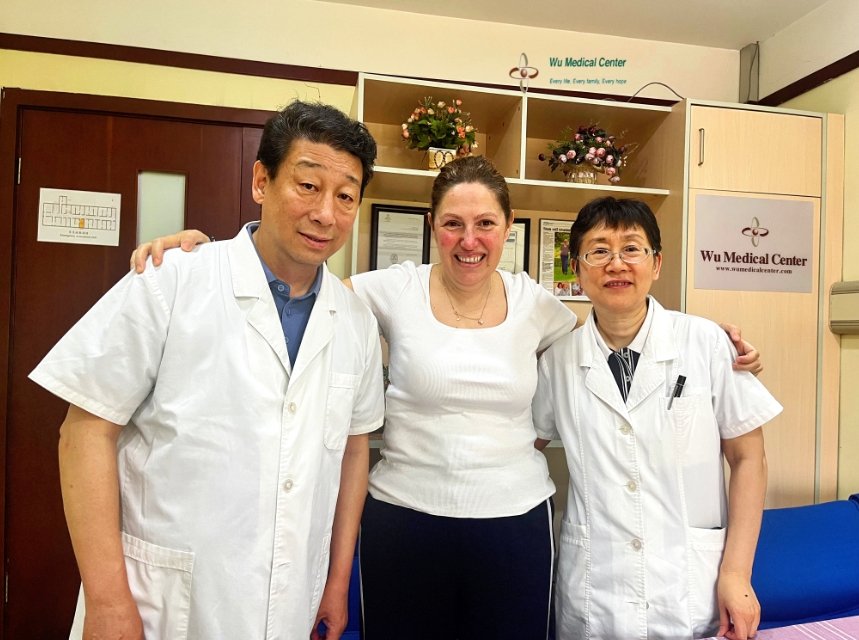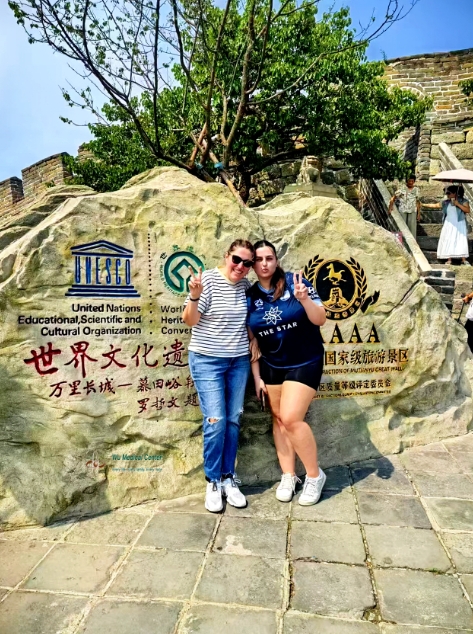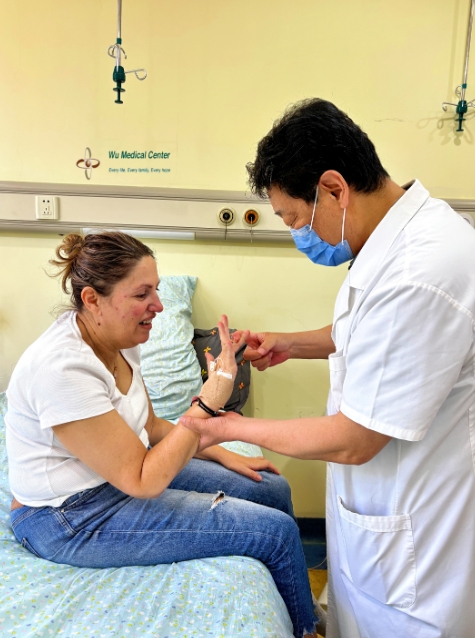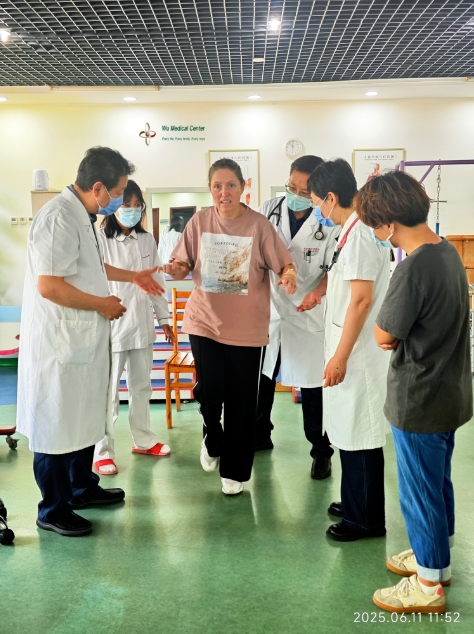Tanja Radulovic--Amyotrophic lateral sclerosis (ALS)-(Australia)
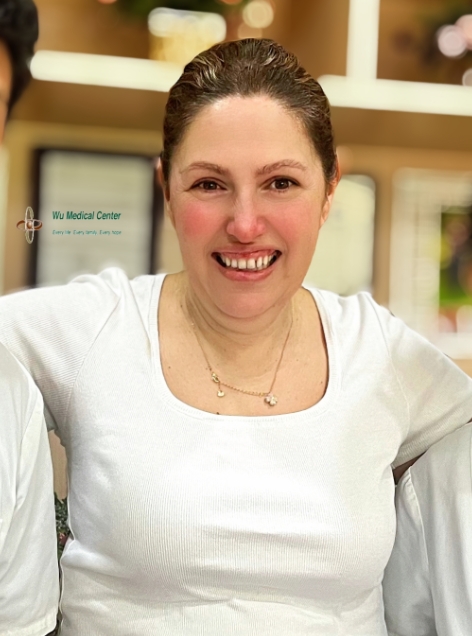 Patient Name: Tanja Radulovic
Patient Name: Tanja Radulovic
Gender: Female
Age: 47 years old
Nationality: Australia
Diagnosis: Amyotrophic lateral sclerosis (ALS)
Condition at Admission:
The patient was admitted with the chief complaint of "progressive limb weakness for more than 2 years, with worsening accompanied by speech difficulties," diagnosed with "amyotrophic lateral sclerosis." Main symptoms included weakness and muscle atrophy in both hands, weakness in both legs, and easy fatigue after activity. Speech was slow, voice was weak, with increased salivation and mild swallowing difficulties, occasionally leading to choking. She was currently taking Riluzole with no significant effect. The patient had a history of hypertension and is taking Perindopril, with well-controlled blood pressure. She had a history of leukopenia and anemia for many years. In April 2025, a local hospital examination indicated mildly elevated ALT levels.
Physical Examination upon Admission:
The patient's pulse was 85-92 beats per minute, respiration rate was 22 breaths per minute, blood pressure was 126/79 mmHg, and oxygen saturation was 92-95%. Her height was 166 cm and weight was 70 kg. There was no significant cyanosis of the lips, mild decreased respiratory movement, and diminished breath sounds in both lower lungs. Heart rhythm was regular, with no murmurs in any valve areas. The abdomen was soft, and the liver and spleen were not palpable below the ribs. There was no edema in both lower limbs.
Neurological Examination:
The patient was alert and in good spirits. Her articulation was unclear, speech was slow, and pronunciation was difficult. Eye movements in all directions were flexible. The tongue was positioned centrally, with slow movement and reduced flexibility, and significant atrophy of the tongue muscles. Her cheek puffing strength was adequate, and chewing ability was also fair. The elevation strength of both soft palates was weak. Neck rotation and shoulder shrug strength were rated at grade 4. Proximal muscle strength in both upper limbs was grade 3+, with left wrist flexor and extensor strength at grade 3, left grip strength at grade 3, and left interphalangeal strength at grade 3. Right wrist flexor and extensor strength were rated at grade 3+, grip strength at grade 3+, and interphalangeal strength at grade 3+. Both lower limbs had muscle strength at grade 3+, with left foot plantar flexor and dorsiflexor strength at grade 2, and right foot plantar flexor and dorsiflexor strength at grade 2-. She could not stand on one leg and required significant assistance from others. Muscle tone in all limbs was normal. Muscle atrophy and fasciculations were observed in all limbs. Sensation in all limbs was normal. Tendon reflexes were slightly diminished, and the Babinski sign was weakly positive bilaterally. The finger-to-nose test was slow, with the left thumb unable to touch the ring and little fingers. Meningeal signs were negative.
Treatment Process:
The patient was definitively diagnosed with "amyotrophic lateral sclerosis" upon admission. During her hospitalization, she received neural stem cell therapy to repair motor neuron damage, mesenchymal stem cells for neurotrophic, endocrine, and immune support, and adjunctive medications such as Edaravone, Riluzole, neurotrophic factors, reduced glutathione, and immunoglobulin as part of CAST therapy, along with comprehensive rehabilitation treatment.
Post-Treatment Results:
The patient showed significant improvement in limb motor function and increased muscle strength. Neck rotation and shoulder shrug strength were essentially rated at grade 5. Proximal muscle strength in both upper limbs was at grade 5, with left wrist flexor and extensor strength at grade 4+, left grip strength at grade 4, and left interphalangeal strength at grade 4. Right wrist flexor and extensor strength were rated at grade 5-, grip strength at grade 5-, and interphalangeal strength at grade 4+. Muscle strength in both lower limbs was at grade 4+, with left foot plantar flexor and dorsiflexor strength at grade 3, and right foot plantar flexor and dorsiflexor strength at grade 3-. She could independently stand on one leg for up to 3 seconds, and her walking ability improved. The speed of the finger-to-nose test increased, with the left thumb able to successfully touch the ring and little fingers. Her cardiopulmonary function improved, with a heart rate of 75-82 beats per minute, oxygen saturation maintained at 97-98%, increased respiratory movement, and clearer breath sounds in both lower lungs compared to before. Her energy levels, physical endurance, and exercise tolerance also improved.
